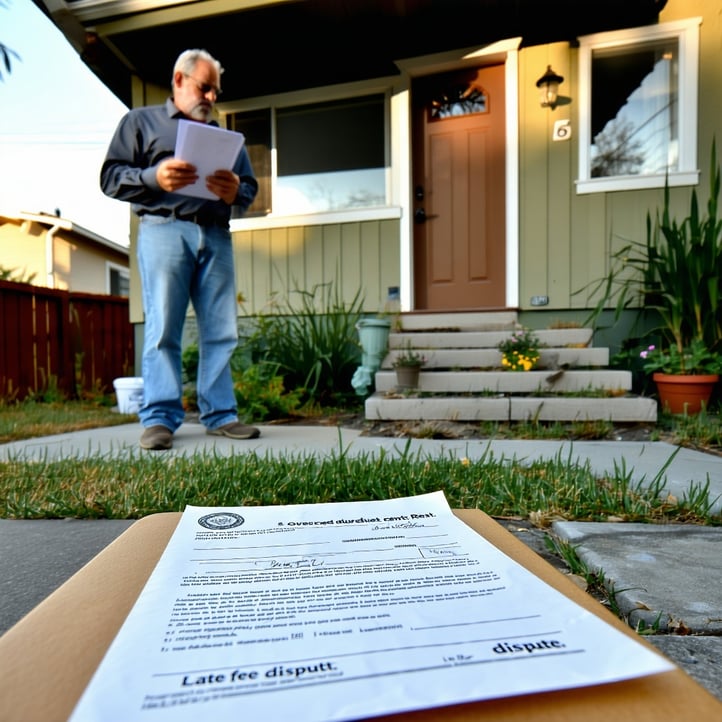If you own a rental property in Carlsbad, Encinitas, Oceanside, or anywhere in North County San Diego, you’ve likely started seeing more tenants driving electric vehicles. Along with this trend comes a question we’re hearing more often:
“Can I install an EV charger?”
As of 2025, California law is clear: in many cases, you must allow it—but only under specific conditions. As a landlord, you do have rights and control over how these chargers are installed and who pays for what.
Here’s what you need to know to stay compliant and protect your property.
When You Are NOT Required to Allow an EV Charger
There are a few important exceptions where landlords are not required to approve a tenant’s request for an EV charging station. These include:
-
No Parking Space in the Lease
If your lease does not include a designated parking space, you are not obligated to provide one just for the charger. -
Fewer Than Five Parking Spaces Onsite
The law does not apply to rental properties that have fewer than five total parking spaces. -
10% EV Charger Threshold Already Met
If EV charging stations are already installed for at least 10% of your property’s parking spaces, you're exempt. -
Rent Control Exemption
If your property is under rent control and the lease was signed before January 1, 2019, you’re not obligated to approve a new installation.
If none of these exemptions apply and the tenant makes a written request, you are generally required to allow the charger but only if the tenant follows the law and covers all related costs.
What a Tenant Must Do to Get Approval
If a tenant is eligible to request an EV charger under the law, they must also meet very specific requirements:
1. Submit a Written Request
The tenant must submit a written request that outlines their intent to install a charging station. The law only applies to leases executed, renewed, or extended after July 1, 2015, under California Civil Code §1947.6.
2. Agree to a Written Installation Agreement
You can require the tenant to enter into a formal agreement that includes:
- Full compliance with state, local, and HOA rules
- A complete scope of work and cost breakdown
- An agreement that the tenant pays for all costs: permits, installation, upgrades, repairs, and future removal
- Confirmation that any electrical modifications will be performed by a licensed electrician
3. Pay for Installation and Maintenance
The tenant is responsible for 100% of the costs related to:
- Infrastructure improvements (e.g., panel upgrades)
- Construction and contractor fees
- Ongoing maintenance, repair, or removal
- Electrical usage associated with the charger
- This cost structure should be outlined in your rental agreement addendum to protect both parties.
Insurance Requirements
In most cases, landlords are allowed to require the tenant to carry personal liability insurance up to 10 times the annual rent for damage or injury related to the charger’s use.
However, this insurance requirement does not apply if both of the following are true:
-
The charger is certified by a Nationally Recognized Testing Laboratory (approved by OSHA)
-
Installation is performed by a licensed electrician
If both of those criteria are met, you cannot require insurance coverage.
Can You Charge Extra for Parking?
Yes. If the installation of the charger results in a reserved parking space for the tenant, you are allowed to charge market rent for that parking space. This is true even if the lease previously did not assign a designated space.
How Local Governments Handle Approval
As of January 1, 2022, cities and counties must approve EV charger applications administratively, meaning:
- They can only review for compliance with health and safety laws
- They cannot deny an application for arbitrary reasons
- For installations of fewer than 25 chargers, applications must be deemed complete within 5 business days and approved within 20 days. This speeds up the process for tenants and contractors but also places pressure on landlords to stay organized.
What About Reliability and Maintenance?
Starting in 2024, California’s Energy Commission began tracking charger uptime (the amount of time the charger is fully operational). While this doesn't impact most small-scale landlords directly today, any charger funded through public money or utility programs may soon require maintenance documentation.
This makes it even more important for landlords to have a clear agreement with tenants about who is responsible for keeping the equipment working—and paying for repairs.
Summary: What Landlords in North County San Diego Should Do
If you’re a landlord in Carlsbad, Encinitas, Oceanside, or the surrounding area, EV charger requests will only increase in the coming years. To protect your property and comply with California law, we recommend the following:
- Review your leases: Make sure they clearly address parking and mention EV charging where applicable
- Create a standard EV charger agreement: Include insurance, installation scope, cost responsibility, and removal terms
- Don’t delay requests: If a tenant qualifies, failing to respond or deny without cause may create legal risk
- Consult professionals: Installation and wiring should always be done by a licensed contractor
Final Thoughts
Yes tenants in California may have the right to request EV charging stations. But you have the right to control how it’s done and who pays for it.
At Raintree Property Management, we help landlords across North County San Diego manage their rentals in full legal compliance. We know how to handle EV charger requests, lease modifications, and communication with tenants so you don’t have to figure it out on your own.
👉 Have questions or need help with an EV charger request?
Click here to request a free rental analysis or contact us directly.




